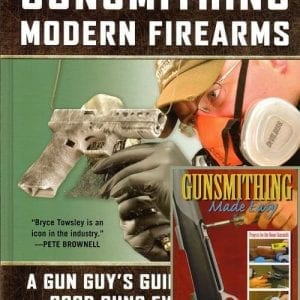The saying that “a carry gun should not be comfortable, it should be comforting,” is, like most platitudes, corny, catchy and flawed.
The problem with carry guns is that you have to carry them. If we could pick the time and place we would need them, that wouldn’t be much of an issue. But we can’t.
I remember field testing a new holster with a full size 1911 pistol a few years ago. My wife and I were at the theater watching “Quantum of Solace.” By the end, I don’t remember which was more painful, the movie or the pistol. But, I hated them both.

The .380 ACP handguns are small, difficult to shoot accurately and lack power. But they are much easier to carry than a full size 1911
Big guns are heavy and uncomfortable to carry, so we wind up finding excuses to leave them home. That’s never a good idea. One alternative embraced in droves in recent years is a sub-compact, polymer frame .380 Auto pistol. I once heard them described as a great choice for those days when you decide not to carry a gun. A little exaggeration no doubt, as any pistol that you will carry is better than a .45 on the dresser at home. But, let’s face it, the .380 is only good for instant neutralization of the bad guys in James Bond movies. In real life it’s a bit anemic and underpowered.
The thing is, these guns are handy and very easy to carry. I’ll confess, I often grab a laser sighted polymer .380 when heading out the front door. It’s small, it fits in my pants pocket and it’s easy to carry. But the little cartridge is never easy on my mind.
Factory ballistics for Federal Premium Personal Defense Hydra-Shok ammo (one of the best ammo choices) lists the .380 with a 90 grain bullet at 1,000 feet per second from the muzzle. This creates 200 foot pounds of energy which, to be honest, when trying to stop a drug-crazed, prison-hardened bad guy . . . ain’t much.
It’s even less in the real world where the ballistics are diminished by the short barrels used in the sub-compact pistols, losing more than 10% of the published velocity. That drops the energy down to about 160 foot-pounds.
A true fighting cartridge like the .45 ACP with a 230-grain Federal Hydra-Shock has 414 foot-pounds, an increase of 159%, or 2-1/2 times the energy of the .380. There is also a 27.32% increase in bullet diameter and 155% increase in bullet weight. All this matters.
Recently a video went viral showing an armed bad guy forcing his way into a store. The armed woman on the other side of the door shot him, possibly more than once, with a little polymer frame pistol that I assumed was a .380. The bad guy ran away, but if he had decided to fight, he was more than healthy enough to shoot back. Would another cartridge have stopped him cold? Who knows, but the math says it would have a better chance. On the other hand, she had the .380 in her pocket and probably would have left a full size gun under the counter and out of reach.
While a hard core gun guy will weigh the merits of each cartridge and bullet option, for most folks one cartridge is as good as another. They are vaguely aware that a .45 is more powerful than a .380, but are more likely to focus on the additional recoil than the enhanced terminal performance. They buy the gun, not the cartridge.
The little polymer frame .380 autos are immensely popular, but I doubt that most of the buyers have a clue about the performance of the cartridge. The guns are popular because they are inexpensive and lightweight. Plus they are not as “scary” as a full size gun, which drives a large segment of the gun buying population.
I think that anybody thinking of buying a .380 as a primary carry gun should see firsthand a comparison of the various pistol cartridges using ballistic gelatin or some other type of ballistic media. Another eye opener is to shoot a reactive steel target with the various cartridges. The contrast is striking. This is simply not a powerful cartridge.
There are two arguments that will surface here about the .380.
First, “it’s better than no gun at all.” I agree. That’s why I own and carry .380 handguns. But, I am under no illusions about the fight stopping ability of the cartridge.
The other?
“It’s all about shot placement.”
But, those making that argument are mostly people who have never shot any sub-compact gun in a stressful situation. Nobody is good enough to insure a head shot every single time. If you don’t believe me, sign up for a hard-core training course, like those at Gunsite or the Sig Sauer Academy and shoot it with a polymer frame .380.
Obviously we can’t train in real gunfights, so the closest thing we can find is training scenarios that are designed and conducted by experienced trainers. Or, a less expensive approach is to sign up for a local USPSA or IDPA match and shoot it with your .380.
You might think you are a badass who can shoot the whiskers off a gnat, but prepare to be humbled. Formal training or competition will quickly show you that “shot placement” in a life or death situation is not easy with any gun and exponentially more difficult with a sub-compact.
So what am I saying here? Only this. Polymer frame .380 handguns have a place in the world of self-defense, but most of the citizens buying these guns have a poor understanding of that place. These guns are small, underpowered handguns that very difficult to shoot well.
They can save your life, or cost it, depending on the circumstances. If you carry one, train with it often. Load it with only the best ammo and put a laser sight on the gun. But, most importantly, learn its limitations. As a primary carry gun, the .380 ACP is a long way from perfect.



